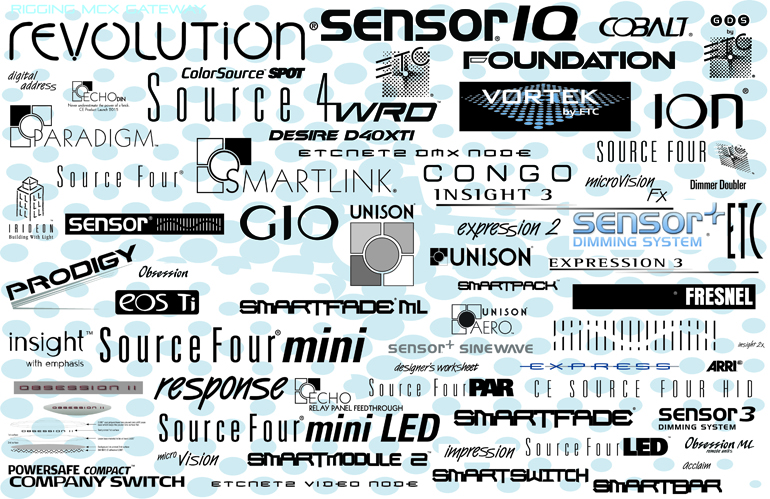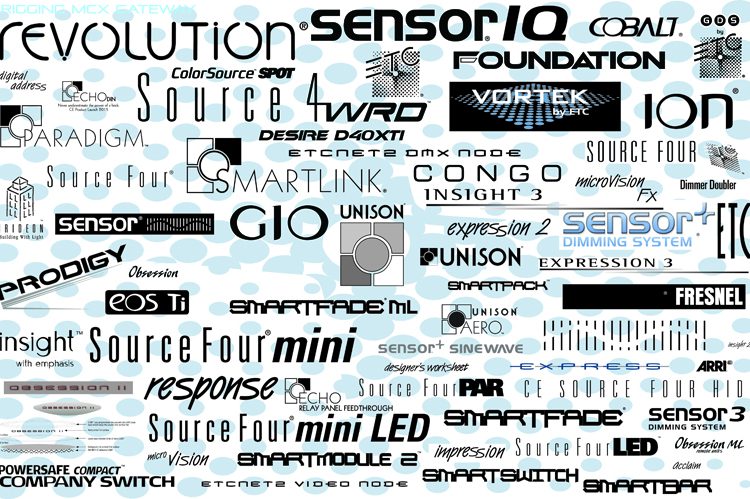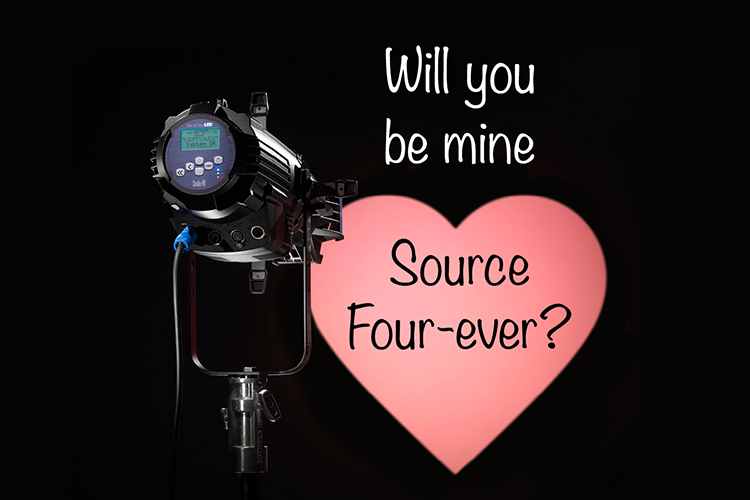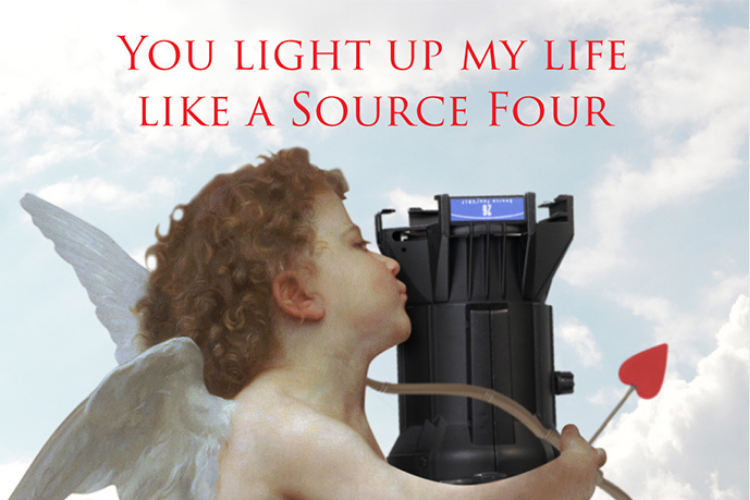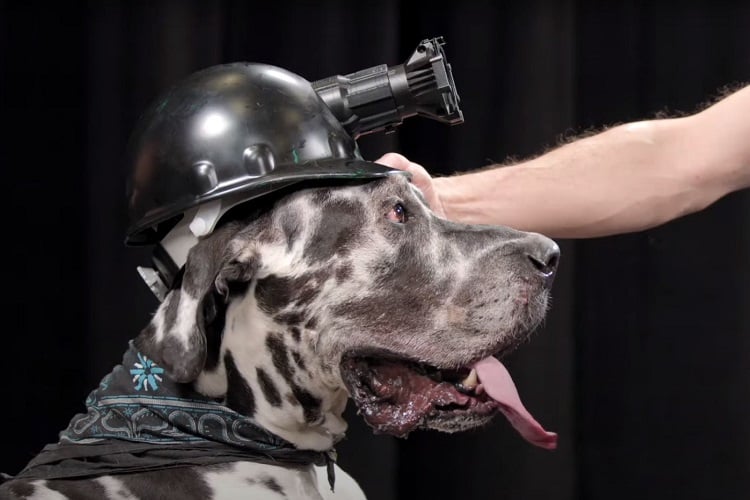You’re not alone.
Naming a new product can be a challenge, especially finding one that everyone loves. We know that if you’re spending hours a day using a product, and saying its name over and over, you want it to be something you’re comfortable with.
Typically at ETC, a product will be given a code name while it’s in development. We try to get products named quickly, so the code name doesn’t stick, but there are quite a few products that kept their code names after being leaked. That’s why – in an effort to keep the real name out of meeting minutes – the R&D department uses the code name until the official launch.
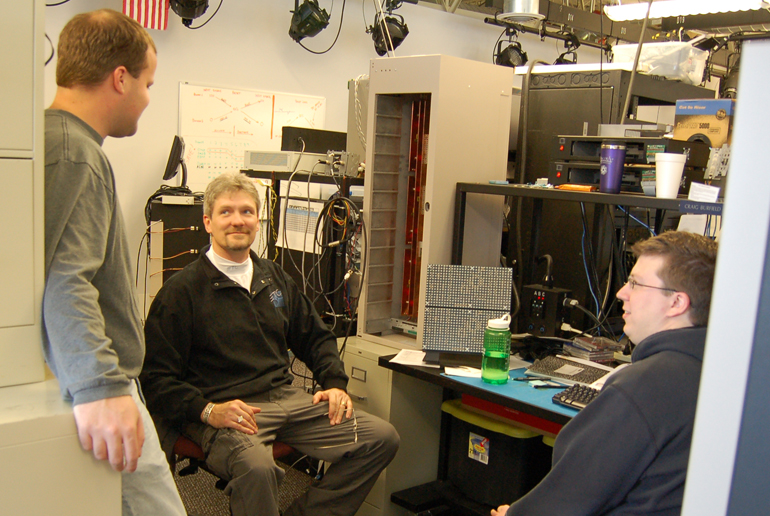
Next, the product manager typically gathers a team to select the real name of the product. We spend a good deal of time Googling the themes we have for a product or product family, and scouring thesauruses, encyclopedias of mythology, Latin dictionaries, and astronomical maps for something that catches our eye. Then we take the important step of running the name through Urban Dictionary… just to be on the safe side. Sometimes we’ll hold a competition and get user suggestions for product names. (Console McConsoleface, anyone?) In some cases, we’ll go back to our roots and reuse a name from a previous product (think: Irideon, ColorSource, Response, etc.).
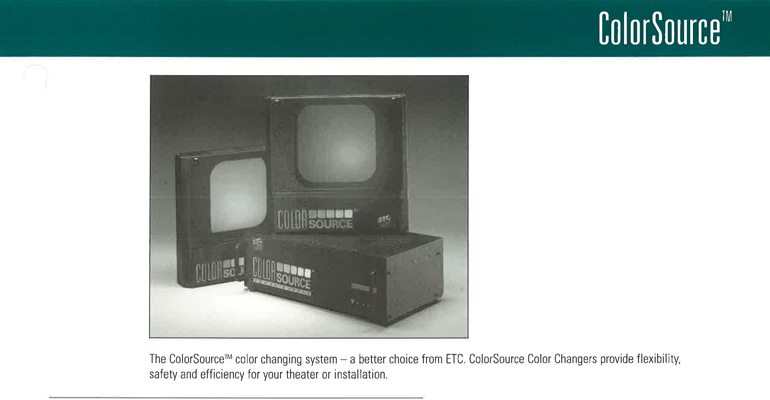
The entire process can take a very long time, with hundreds of names getting scrapped along the way. Although rare, occasionally we’ll settle on a name instantly, which is cause for celebration. Most of the time, we select a name when someone gets a stroke of genius and tosses out a suggestion. Senior Product Manager Specialist Sarah Clausen aptly describes our product naming process: “Sometimes it’s inspiration; sometimes it’s perspiration; and sometimes it’s desperation.”
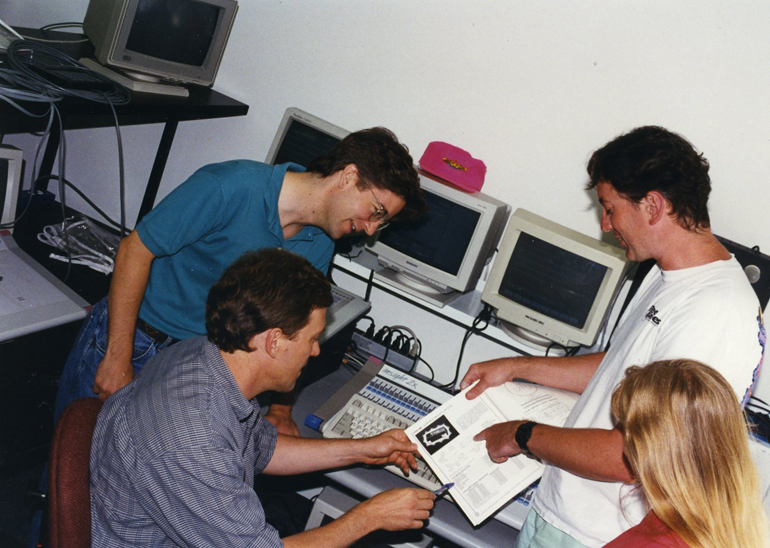
Once we’ve created a shortlist of names, we’ll check with the trademark office to see if any of them are available for us to use. Then we have the agonizing process of settling on one name, bringing it to market, and crossing our fingers that the industry likes it.
There are some entertaining, interesting and even surprising stories from our history of how some of our products got their names. In this blog post, you’ll get the scoop on where the names of your favorite and not-so-favorite products came from, told in first person by some of the people who have been through the naming process.
Source Four
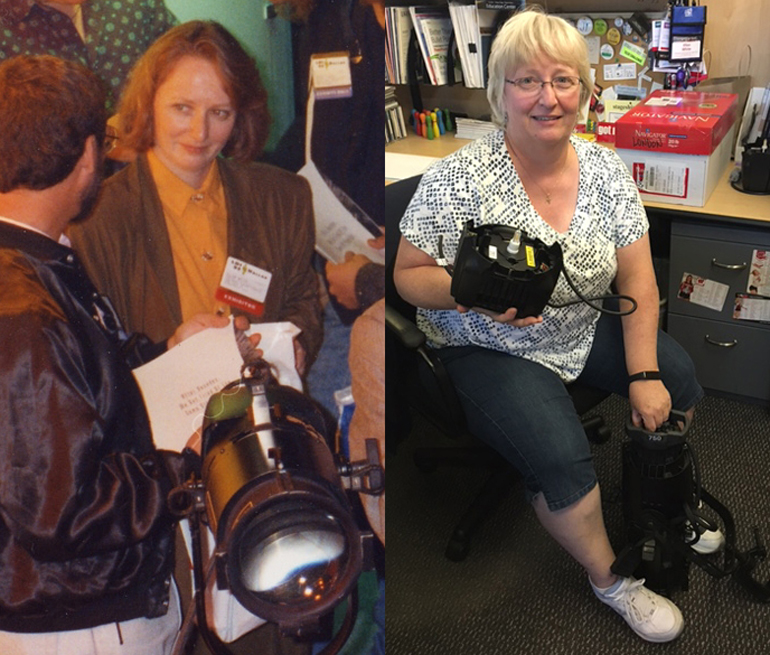
David Lincecum, vice president of marketing:
The name is extracted from the four-filament source used in the fixture. Everyone thought it was perfect, and that it was a “sticky” name that people would relate to. Anne [Valentino] was jealous at the time, because they were naming the Obsession and couldn’t come up with anything!
Obsession
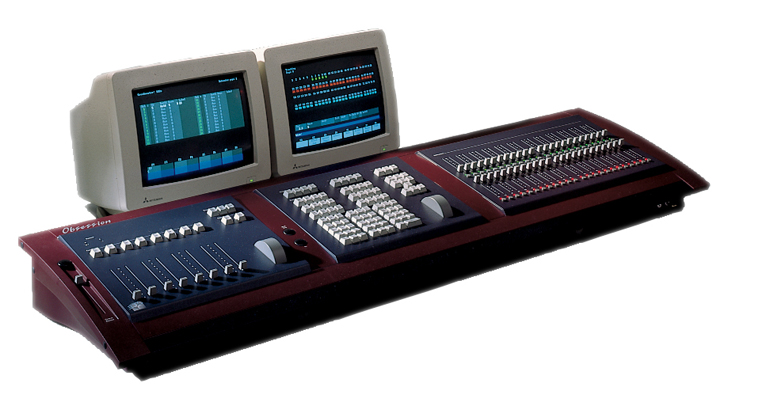
Anne Valentino, senior controls product manager:
In 1990, Fred [Foster, ETC CEO] wanted an ETC desk to be used on Broadway, which at that time used only Strand LightPalettes. ETC was developing a new console, which was code-named Obsession, because lighting designers were “obsessed” with the way a LightPalette worked.
We held a contest for employees to name the new desk, and former Southwest Regional Sales Manager John Massey suggested “Praxis.” We all loved it. But I introduced it to a group of people and they laughed at it. It turns out that Praxis is the name of a moon that exploded on an episode of Star Trek. So that was out.
By then, the code name had gotten out into the world. [Vice President of Sales] Mark Vassallo finally made the call to go with the code name, so the desk officially became “Obsession.”
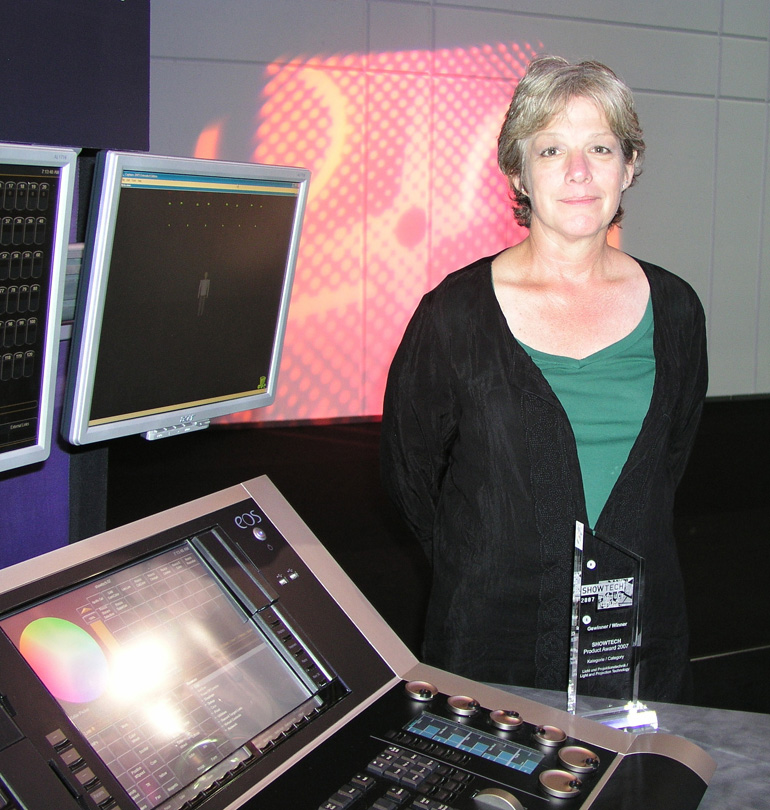
Anne:
We almost went to market with the code name, Onyx, because we really liked it, but there was a sound board on the market with that name. It had just launched and was at all the tradeshows.
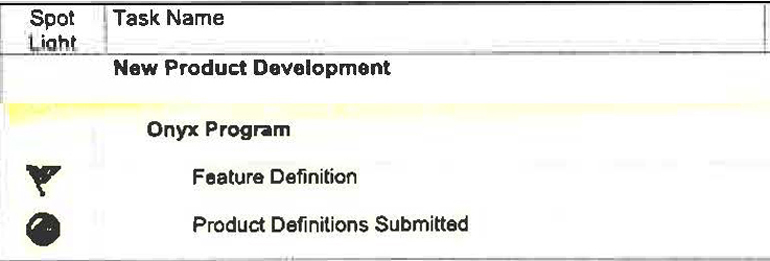
In the end, it was [former Senior Communications Specialist] Patricia Bornhofen who had a stroke of inspiration and came up with “Eos,” the goddess of dawn, which fit the mythological theme we had for the desk.
“Eos” also fit my requirement that the name be short. Everyone shortens the names of products, like “Obsession” is “Obs,” “Virtuoso” is “Virt,” and “Source Four LED Series 2 Lustr” is “Lustr2.” To prevent people from shortening them to something else, the names of the desks in the Eos family had just three letters.
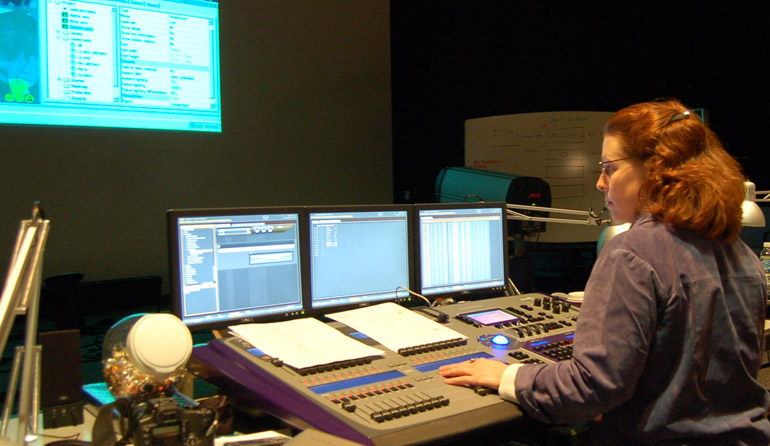
Sarah Clausen:
“Congo,” the working name, slipped out. Back then, all our products had color names: Eos was Onyx, Revolution was Magenta, and Congo was Congo. We still have some spare parts sitting around the factory that have those names on them.
We worked and worked to come up with a better name. We had phone conferences, get-togethers, and brainstorming sessions. At one point, we had committed to calling the desk “The Avab Board by ETC.” (Seriously.)
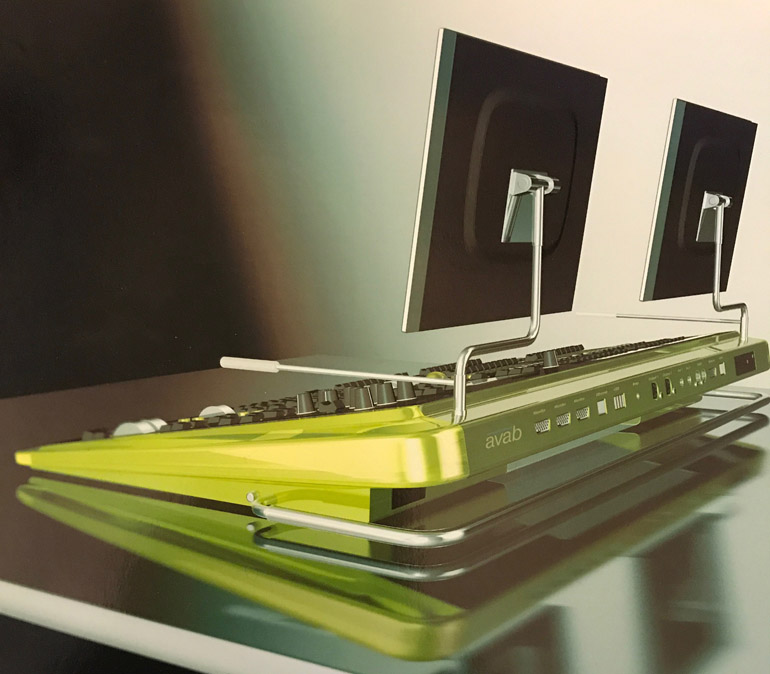
We were also trying to figure out what color the desk would be. There was an industrial design image of a green/yellow Congo. We even built a red Congo board, which is now hanging in software developer Lars Wernlund’s garden as a giant fidget spinner. That desk now serves a greater purpose: keeping children entertained!
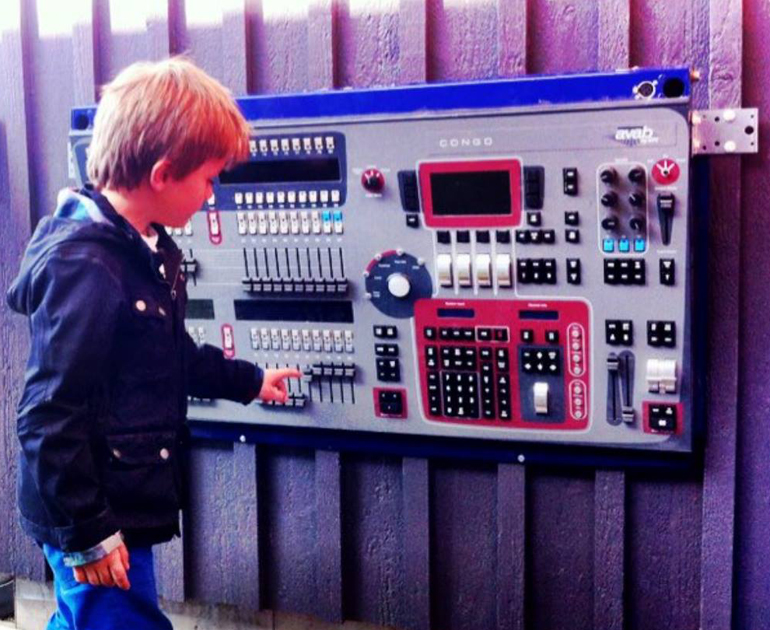
During a teleconference, we finally just said, “Let’s go with Congo.” The color of the desk was decided by its name, which also carried forth to the Cobalt product line.
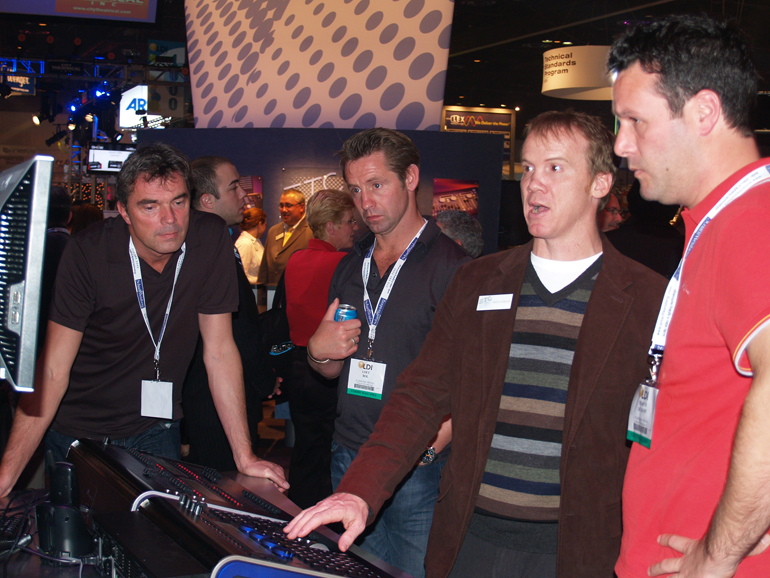
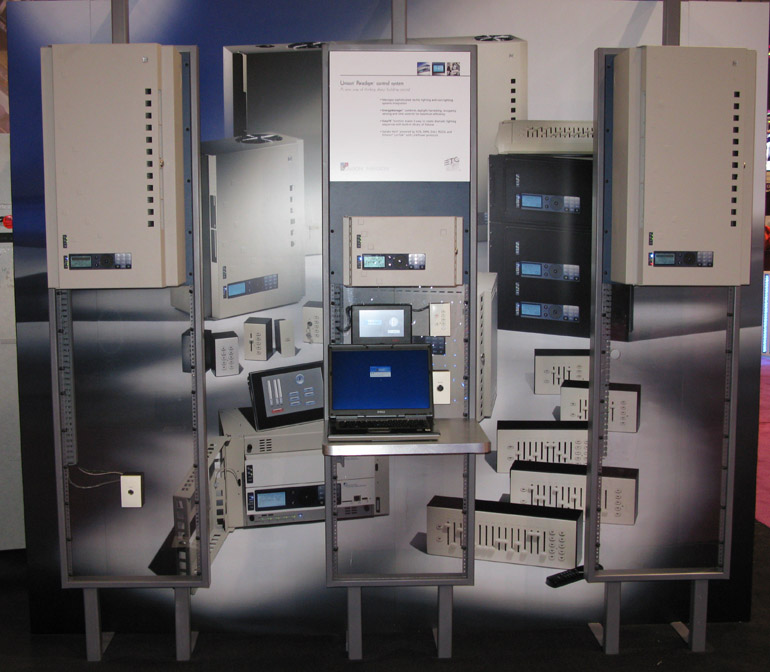
David:
Back then, all products in R&D were given numbers. Unison was called the P80 processor. We were working with Disney on the Animal Kingdom park, which used a Unison system. It was our first big, modern-day, park-wide control system. All the boxes on the drawings of the park’s system were labeled as “P80.” The name stuck there. There are some veteran Disney employees who still call it “P80,” because it became engrained in their memory.
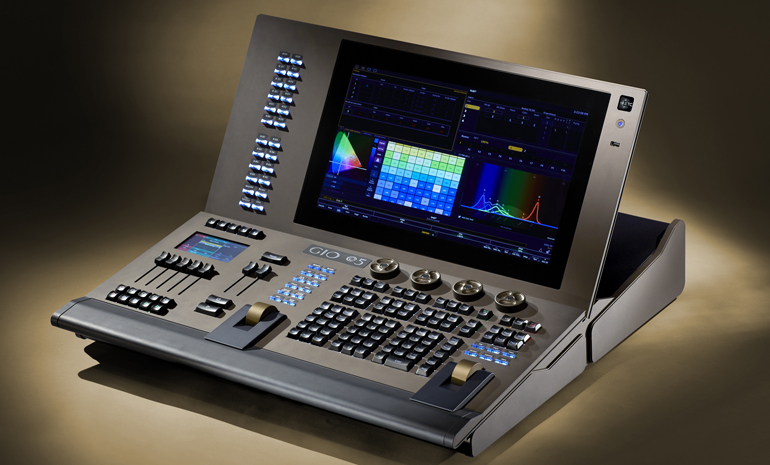
Anne:
We sweated forever over this one. It was an active project for more than a year. We had a long list of names that we narrowed to a short list for a trademark search. It came down to the wire and we were so late in naming it. We needed to decide so we could get labels made for the launch.
I was going to have a teleconference with a small group of people and thought to give the list to [marketing communications specialist] Kate Foster. Half an hour before the meeting, she talked to [field project coordinator] Nick Gonsman, and asked: “When you want to set a channel to Eos at 50%, what do you say?” He replied: “You say ‘@5.’” Kate added “Gio @5” to the list of names and sent it out.
That name kept sticking out in the meeting. It had never been discussed and we didn’t know where it came from. We spent about half an hour hashing it out, and it became the name. After a year of struggling, we named it in half an hour!

Sarah:
Ion was supposed to be the last Expression-family console, before it was added to the Eos family. Tim Guion [of the Lumenpulse Group] and I were sitting in a pub near the New York office, chatting back and forth over lunch about what to call the thing. He joked about the fact that most of the desks in the Expression family end in I-O-N, so why not call the desk “Ion.” It stuck.
When we decided to retire the Expression line, we kept the name. It fit the three-letter naming format of the Eos family, so it worked.
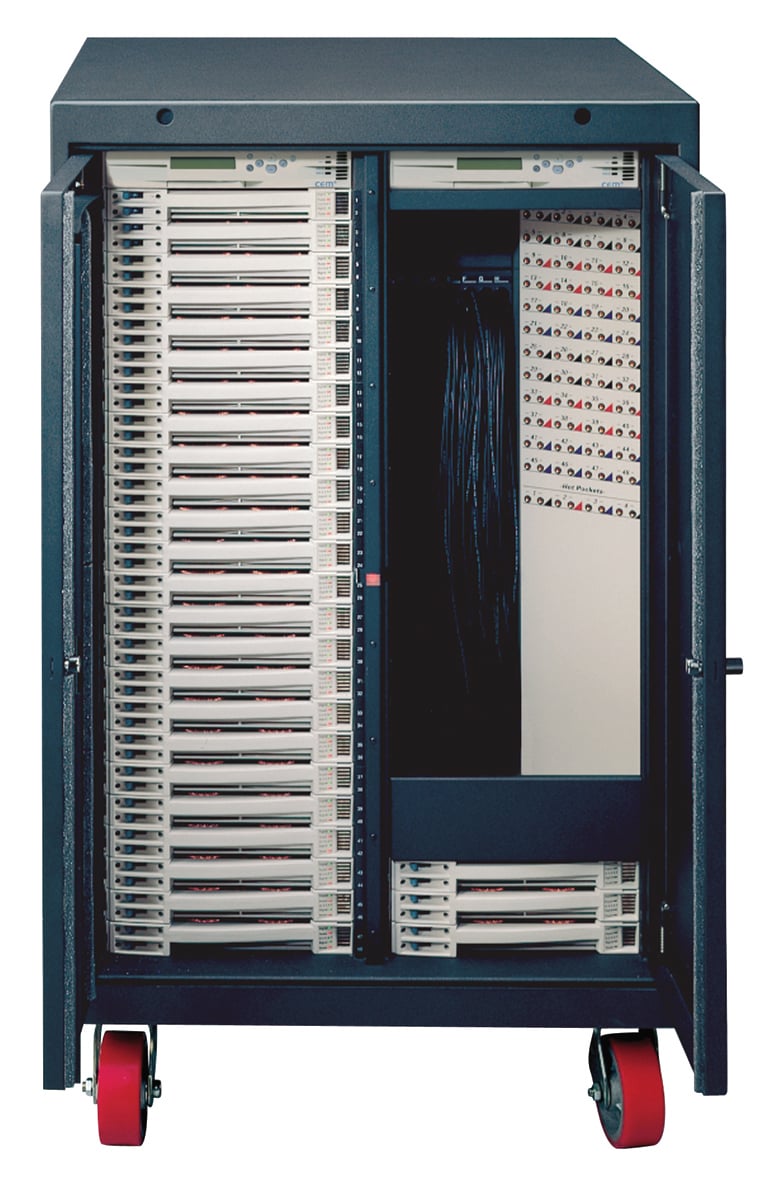
Ellen White, outreach and training specialist:
We were lazy with this one. When the second generation of Sensor dimmers was being developed, we were going around with “Sensor2” forever. John Hainsworth, our product graphic designer, was adamant that we not name it that. He wanted to do something with a plus sign, because there was something in the computer world at the time with a +. He jumped on it and designed the curvy plus sign that’s part of the logo.
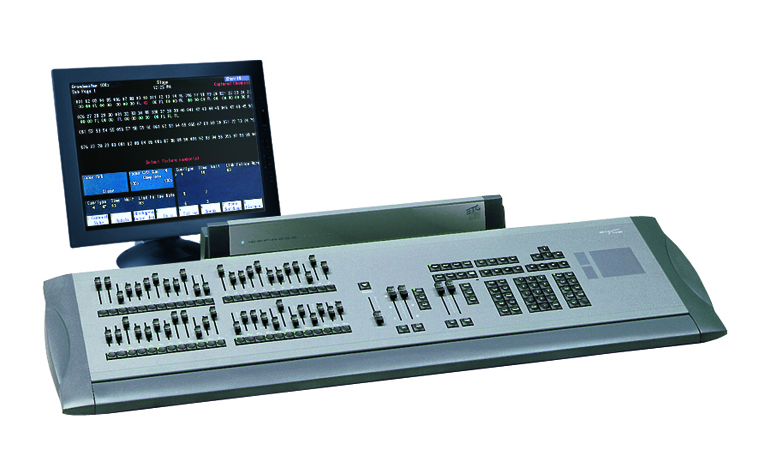
Ellen:
We had a contest for this desk. We went around and around, with tons of names thrown out. Then former R&D manager Jon Ide said: “It’s just a short Expression. Let’s call it ‘Express.’” We looked at him and said: “Done!”
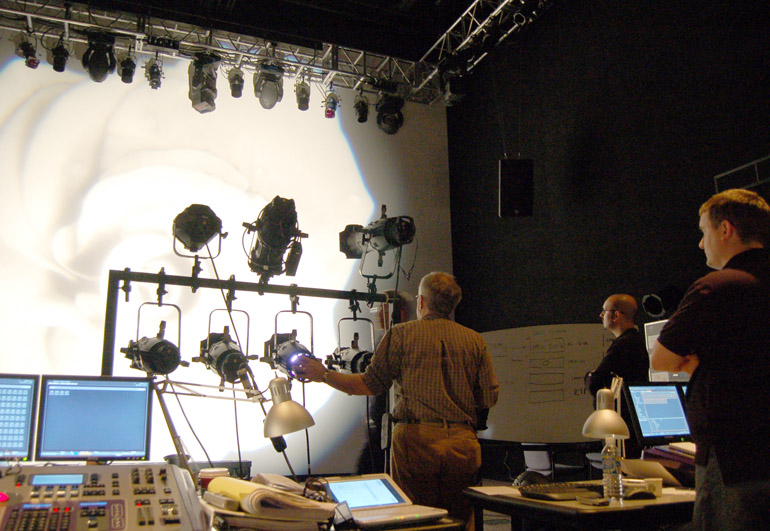
David:
This falls into the category of product names we got wrong. We wanted to call it the “High Definition Lens Tube,” but [Outreach and Training Specialist] Tom Littrell thought that might give the impression that the rest of our lens tubes are low definition. We really missed on that one, because we overthought it. Everyone still calls it the “High Definition Lens,” though.
Good Idea
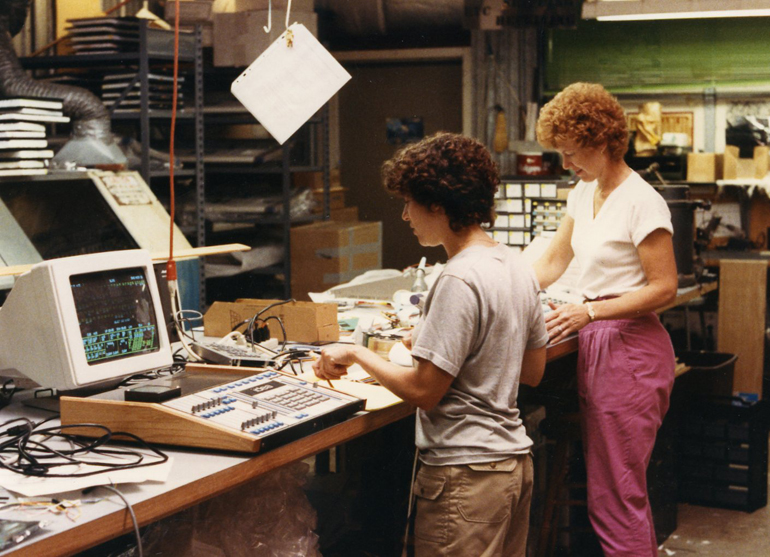
Anne:
I was working at Strand when the Idea console came out. Everyone at the time was trying to design product platforming, where common components are used to build an entire product series. No one had pulled it off. We didn’t do it at Strand. Colortran didn’t do it. Then this little company in Wisconsin comes out with this product family that all had the same software, the same components inside, with variations in physicality. Today that sounds like a given, but in the eighties, it was something everyone talked about, but no one had managed to do.
Ellen:
The naming was due to the breadth of the product line. The line started with Concept, which was meant to be the biggest, most grandiose thing, and then the desks got smaller to represent the size of your idea. It went Concept, Expression, Impression, Insight, Idea, Vision, and MicroVision. We also considered “Notion,” because it’s the smallest idea you can have.
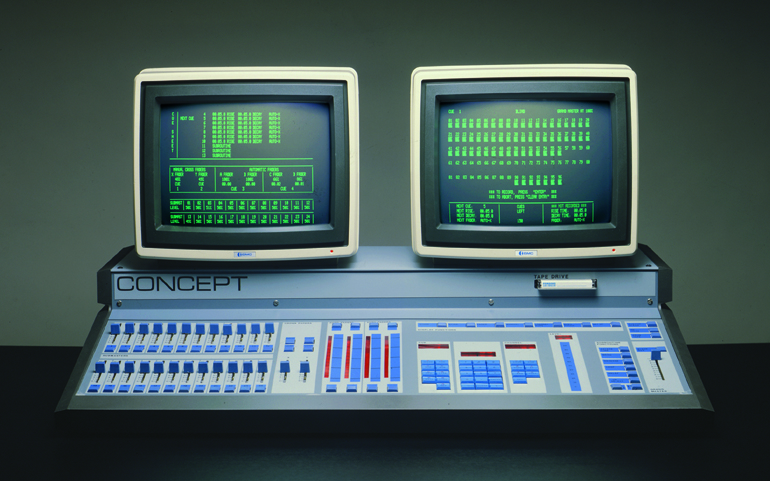
It was brilliant from a naming perspective, but no one could remember which was which. No one knew if Expression came before Impression, or how Vision and Microvision were different.
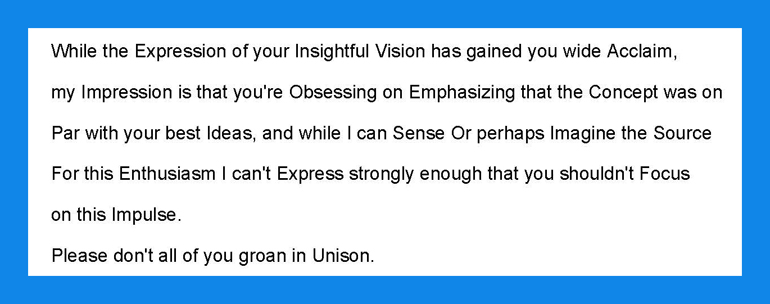
Sarah:
The channel count and color of the knobs were the only differentiators between those desks. The faders were all the same. They all had 24 faders, except Insight, which had 108 faders.
Ellen:
Then we came out with the second series: Insight 2 and Insight 2X. They were named that, because Insight 2 had one level wheel and one monitor, and Insight 2X had two wheels and two monitors. They faded out of the market quickly.
Bad Idea
Ellen:
When ETC bought LMI, they had a console called “Acclaim.” It was a small, two-scene preset console. We needed a new one, but due to a lack of resources, we didn’t do it in house. Instead, it was developed by someone in the industry that was recommended by [Vice President of R&D] Steve Terry. We got the console and were playing with it, when Fred [Foster] suggested we bring back the name “Idea,” because it was going to be at the bottom of the Expression family. So we came out with Idea 24, 36 and 48.
It wasn’t a well-designed console and didn’t fit into the family. It totally left video out, so it didn’t have a monitor with it. We had to add it later, but it didn’t work well, because of the motherboard that the developer chose for the console. It was a bad choice to go outside the company to develop it.
Sarah:
We sold a lot of them. At the time, we would sell Expression-family consoles with Acclaims as backups. When Acclaim went away, Idea took its place. It caused a lot of confusion, because all of a sudden you had a patchable backup desk. It sort of tracked, but it was completely different than what an Expression user was used to.
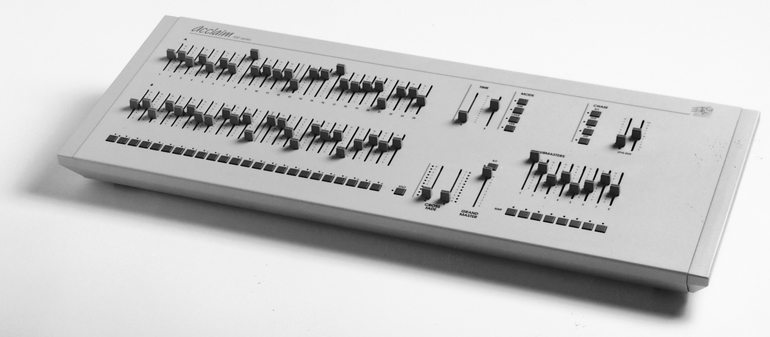
Ellen:
It also caused trouble for Tech Services that we kept the name “Idea,” because there were still original Idea consoles in the field. They’d get calls from people about their Idea console, and they’d have to figure out which one they were talking about. Instead of referring to them as “Old Idea” and “New Idea,” we started calling them “Good Idea” and “Bad Idea.”
Fun fact:
Our first video tutorial was about the Idea console. We pulled the VHS tape out of our vault and shared it in our YouTube Video Library. Click below to enjoy the good old days of 3.5” disk drives and optional giant monitors. You won’t want to miss the glorious nineties fashion and super high-tech graphics. Another bonus: you can finally learn what “LCD” stands for. Get ready to learn how to patch two whole shows on one disk!
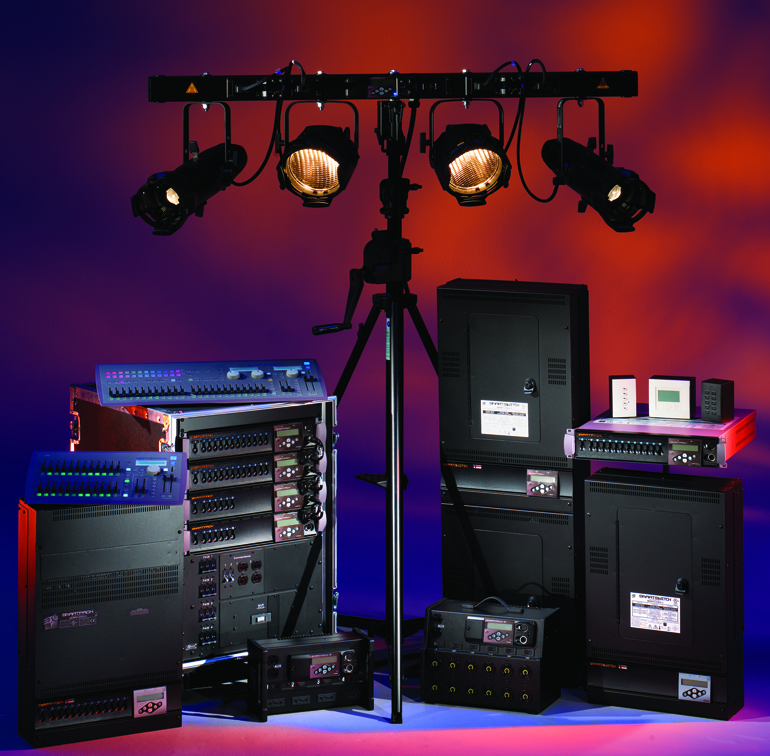
Ellen:
When we purchased ARRI GB in 1995, they had products called “SmartPack” and “SmartRack.” [Technical Director of R&D at ETC Ltd] Adam Bennette worked for ARRI, and when he joined ETC, he said: “Let’s go with SmartPack again.” There was some resistance, because it was already an existing product, but we decided that because no one in the US was familiar with the desk, we’d be okay with that name. It was a bit of a problem for Tech Services in Europe, because they’d have to ask customers who called in if they had an old SmartPack or a new SmartPack.
Sarah:
SmartFade ML was supposed to be “SmartMove,” but right when we were going to announce it, Apollo ‘stole’ the name and came out with the Smart Move gobo rotator.
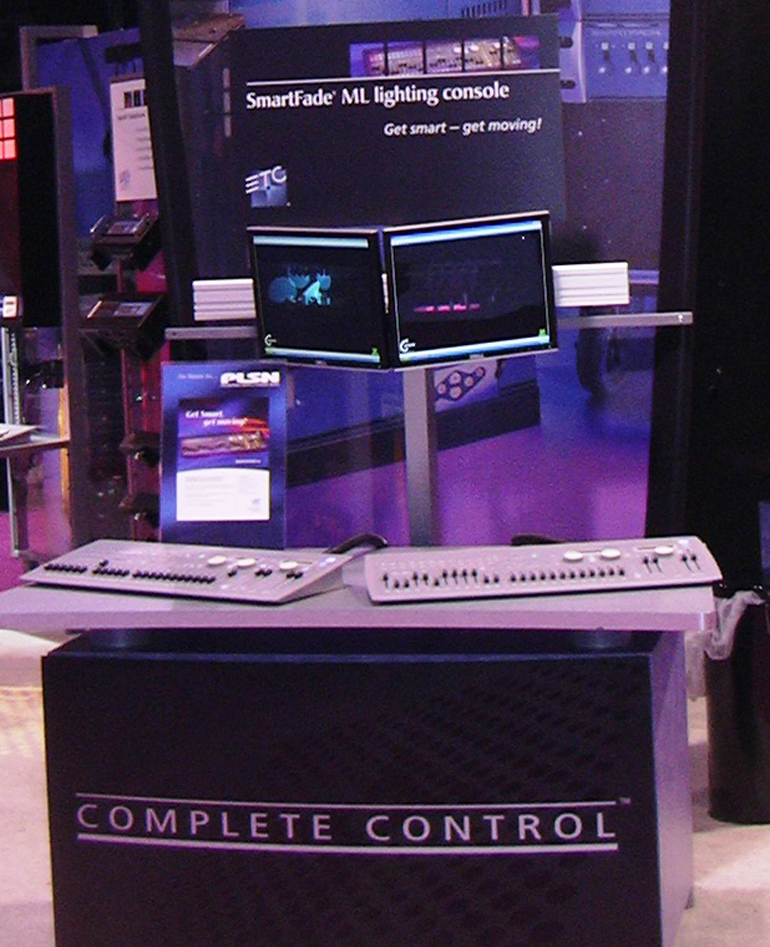
It’s been difficult to come up with names for the Smart family, because so many companies have come out with “Smart” stuff.
Ellen:
Don’t forget that we have a “DumbBar,” too. That’s a SmartBar with nothing in it. It’s just a bar to hang fixtures.
Nomad
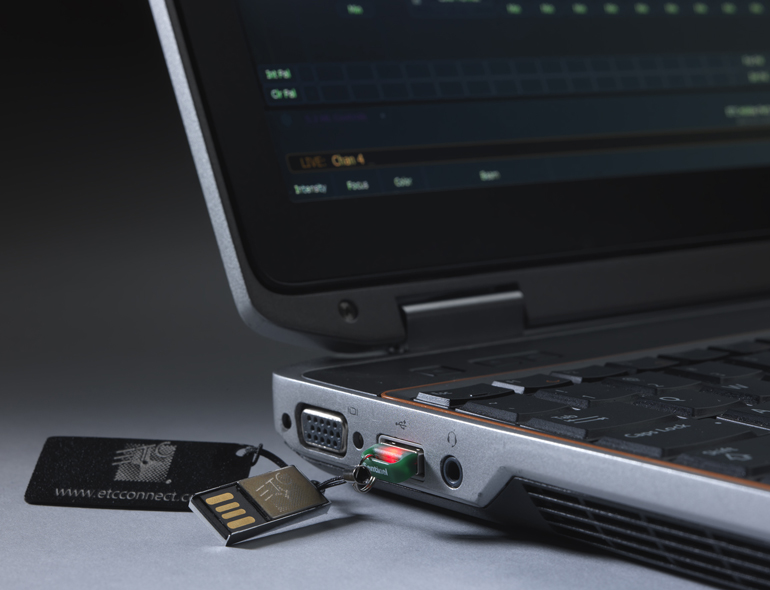
Sarah:
We haven’t had to change product names very often, but Nomad is one. We did patent searches and everything, and thought that “Nomad” was safe. It wasn’t, because Stage Technologies had a Nomad controller. There was a concern about which product would come up first in Google search results, so we changed “Nomad” to “ETCnomad.”
>>>>>>>>>>>>>>>>>>>>>>>>>>>>>>>>>>>>>><<<<<<<<<<<<<<<<<<<<<<<<<<<<<<<<<<<<<<
There’s your backstage peek into the history of ETC product names. I’ll leave you with the answer to a question I know you’ve asked at some point: ELTS2, CEM3, cRRFU, EBDK, iRFR… What’s with all the acronyms?

The truth? They’re so much simpler than coming up with a product name. “Second-Generation Emergency Lighting Transfer System” gets the point across immediately and “ELTS2” is so much easier to say. What else would you expect from a company called “ETC?”
